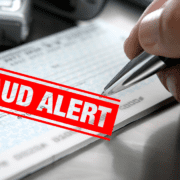It’s Budget Season
As autumn rolls in, we welcome cooler weather, seasonal flavors, and the vibrant hues of falling leaves (even if here in the desert, our landscape remains relatively unchanged). For many businesses, this time of year signifies the onset of “budget season.” But are you running a budget, or a budget process? Done well, your annual operating budget will prove a highly valuable tool for management, leadership, and external stakeholder engagement. A budget *model* shows the financial impact of certain assumptions. A budget *process* drives strategic alignment to guide delivery of results against target, while also giving foresight of obstacles to overcome.
Engagement At All Levels- Top Down, Bottom Up, Internal, and External
A key factor in a successful budgeting process is obtaining stakeholder buy-in. Who are the stakeholders? In general, they can be categorized into three groups: the first are leaders, managers, and other essential employees; the second are equity investors, board members, and advisors; and the third include lenders and other external partners.
Without a well-conceived operating budget, each component group will have its own expectations about the business. Using the operating budget as a tool to align expectations transforms budgeting from a finance exercise into a collaborative effort, allowing all contributors to row in the same direction and achieve more predictable results. Business owners can use the budgeting process to capture, in a durable business document, engagement and ownership from the necessary contributors to achieve goals and strategic objectives.
Having a robust budget also unlocks more power in the month-end review, allowing management to assess where variances occurred—and more importantly, why they happened. Payments and accounting transactions are the last elements to occur. They are preceded and driven by the myriad of business activities we engage in every day. Financial statements are by definition lagging indicators. To understand them deeply, best practice is to map out the leading indicators, track those correlations, and understand how they impact your financial statements.
Consider these vital questions:
- Which trends will continue, which trends will change, and why?
- What costs should increase, what costs should decrease, and why?
- What could cause our results to be off from expectations?
- What investments are we making, and why?
- How could timing delays impact results?
These discussions equip leadership with the insights needed to make proactive, informed decisions about the company’s direction.
Budget Structure Defines a Roadmap to Next Year’s Variance Explanations
Do you want better explanations of results at the month-end? It isn’t very satisfying to hear, “We expected to grow 18% this month but we actually grew 14%.” Specifically, why did we expect that and how did we expect it to take form? Rather than focusing solely on whether a budget variance occurred, it’s essential to understand the reasons behind it. This understanding leads to better informed decision-making in the future. We can always further refine our understanding of how KPIs drive financial results. All of the components of growth and change that we map out in the budget process can be followed and compared with actual results. The obvious corollary to this is that we can’t compare actual results to things that we did *not* map out in the budget process.
Do You Own the Financial Narrative of Your Business? Or Does the Bank?
A robust budget is also crucial when engaging with external stakeholders. If you anticipate significant shifts in performance compared to the previous year, your budget serves as a roadmap for where your company is headed and how you plan to get there. It enhances the credibility of your business narrative, while guiding conversations with bankers, investors, and potential acquirers.
If You Don’t Know Where You’re Going, Any Road Will Take You There
Regardless of whether a strategic transaction is in the picture or not, a well-crafted budget remains an essential tool for business leaders. It helps clarify the driving factors behind company performance and facilitates execution for the future. If you do know where you’re going, how good is your map? Without a good map, you might not get there.
So, as we embrace this budget season, get the most you can out of this opportunity for collaboration, understanding, and proactive planning. Happy budgeting!











